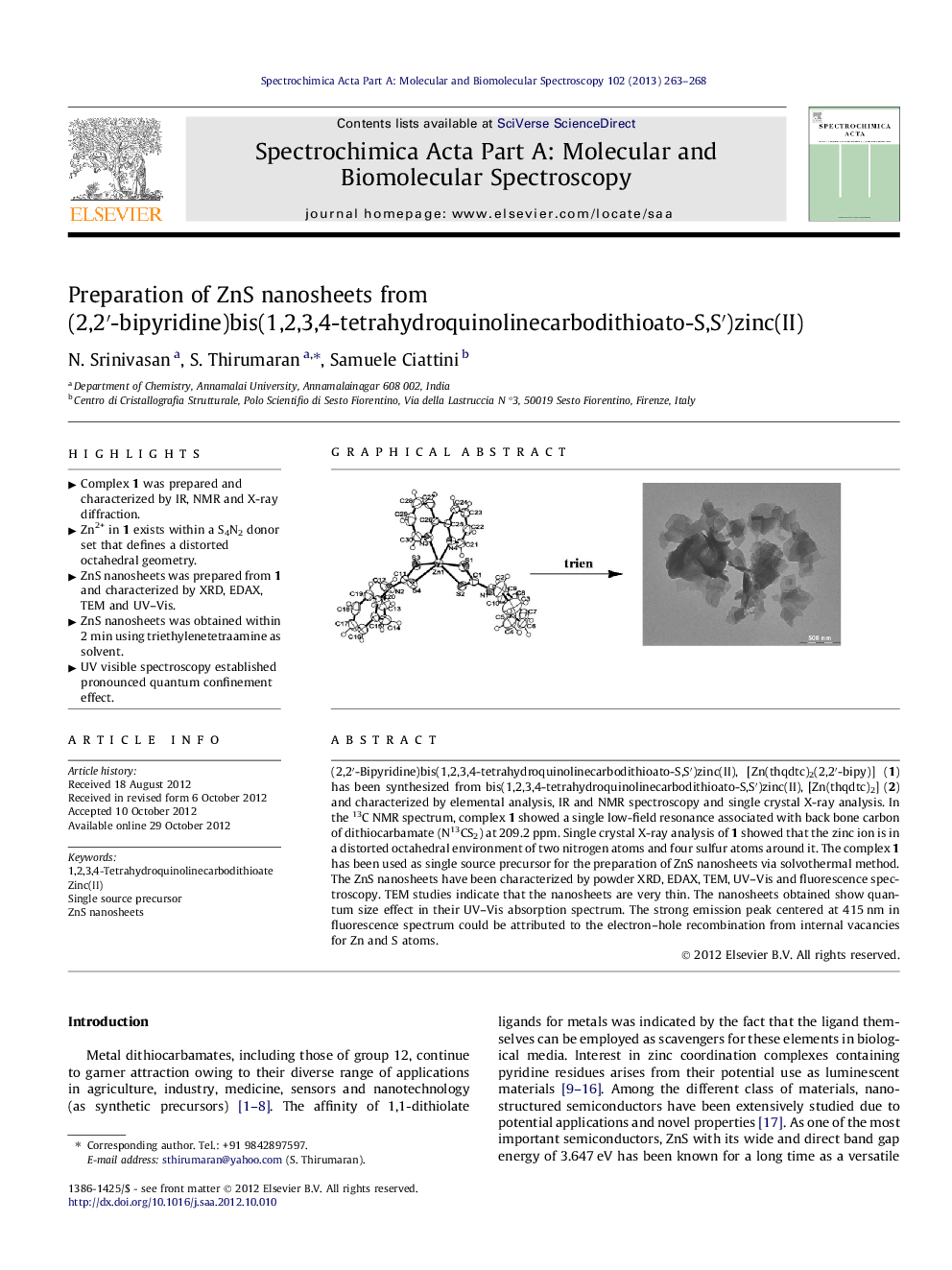| Article ID | Journal | Published Year | Pages | File Type |
|---|---|---|---|---|
| 1231483 | Spectrochimica Acta Part A: Molecular and Biomolecular Spectroscopy | 2013 | 6 Pages |
(2,2′-Bipyridine)bis(1,2,3,4-tetrahydroquinolinecarbodithioato-S,S′)zinc(II), [Zn(thqdtc)2(2,2′-bipy)] (1) has been synthesized from bis(1,2,3,4-tetrahydroquinolinecarbodithioato-S,S′)zinc(II), [Zn(thqdtc)2] (2) and characterized by elemental analysis, IR and NMR spectroscopy and single crystal X-ray analysis. In the 13C NMR spectrum, complex 1 showed a single low-field resonance associated with back bone carbon of dithiocarbamate (N13CS2) at 209.2 ppm. Single crystal X-ray analysis of 1 showed that the zinc ion is in a distorted octahedral environment of two nitrogen atoms and four sulfur atoms around it. The complex 1 has been used as single source precursor for the preparation of ZnS nanosheets via solvothermal method. The ZnS nanosheets have been characterized by powder XRD, EDAX, TEM, UV–Vis and fluorescence spectroscopy. TEM studies indicate that the nanosheets are very thin. The nanosheets obtained show quantum size effect in their UV–Vis absorption spectrum. The strong emission peak centered at 415 nm in fluorescence spectrum could be attributed to the electron–hole recombination from internal vacancies for Zn and S atoms.
Graphical abstractFigure optionsDownload full-size imageDownload as PowerPoint slideHighlights► Complex 1 was prepared and characterized by IR, NMR and X-ray diffraction. ► Zn2+ in 1 exists within a S4N2 donor set that defines a distorted octahedral geometry. ► ZnS nanosheets was prepared from 1 and characterized by XRD, EDAX, TEM and UV–Vis. ► ZnS nanosheets was obtained within 2 min using triethylenetetraamine as solvent. ► UV visible spectroscopy established pronounced quantum confinement effect.
